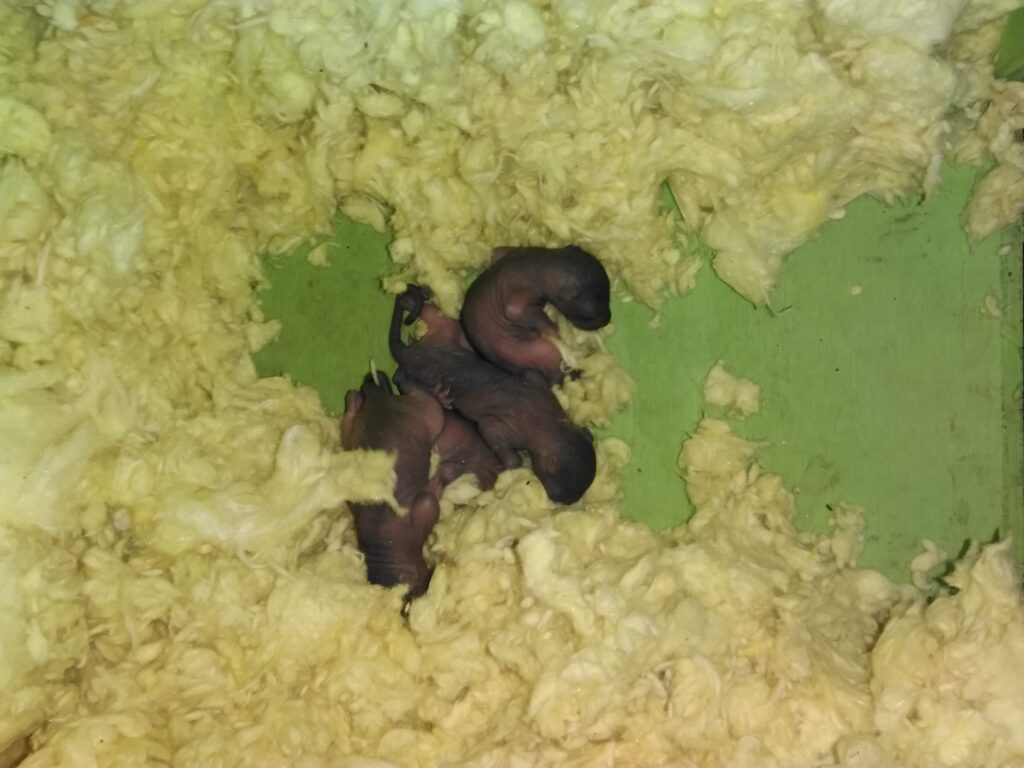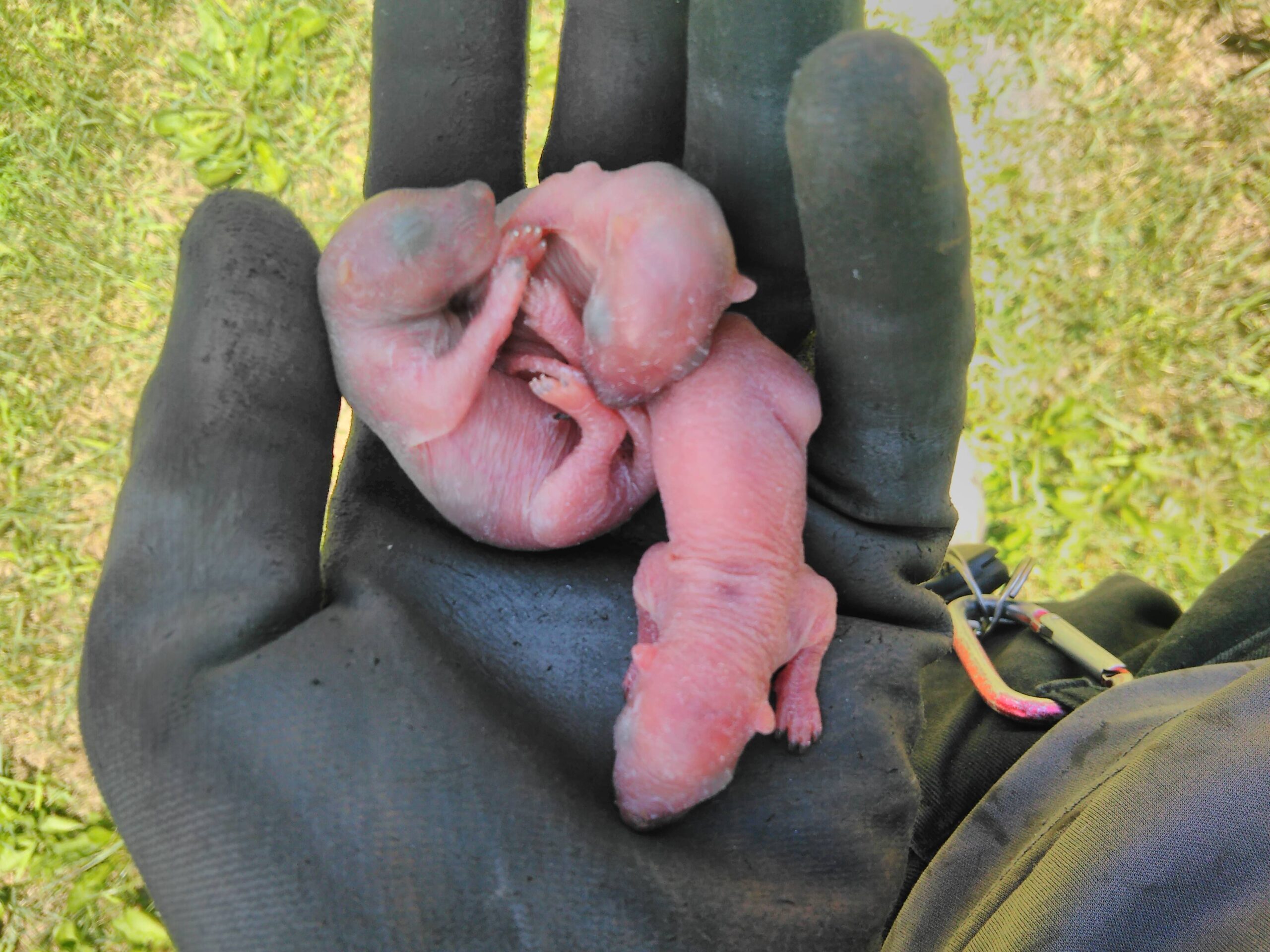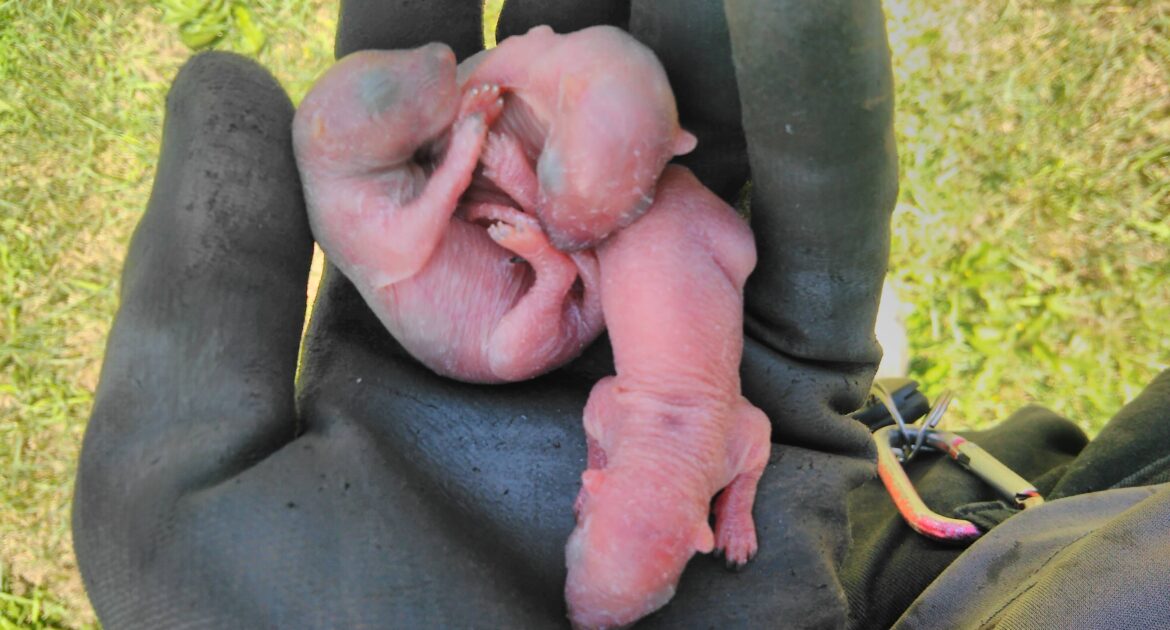Squirrels seem to find their way into the tightest places, expertly tucked far away from human hands to give birth. However, homeowners will notice when newborn squirrels have taken up residence alongside them. Squirrels can give birth up to twice a year, and their repeat litters can be not only a nuisance but also cause damage to the home in summer as well as spring. Learn the signs of squirrel nesting, when to expect them, and the smartest way to approach squirrel removal for a litter living rent-free in your home.
When Do Squirrel Litters First Arrive?
Squirrels are unlike other urban wildlife in that they do not birth a single litter throughout the year, but rather they birth two. In early spring, their first litters will be born alongside raccoons and skunks, and their second litters are born in mid-summer, giving them just enough time to wean their young before winter arrives. While wildlife baby season typically spans across spring, it’s important to educate ourselves on the birthing patterns of squirrels so we know when to look out for them. There are a few signs that homeowners repeatedly report with the presence of squirrels inside the home:
- Repeat noises overhead at all hours
- Acorns piled in corners of attics
- Unpleasant and unfamiliar odors
- Spotting animal droppings
- Damaged insulation or wiring
- Twigs, leaves, or bark
- Visible holes in the roof
- Presence of water damage from unseen holes
The best way to truly and safely identify a squirrel nesting issue is to call professional wildlife control services to come and inspect the home rather than continuing to investigate on your own. Squirrels are mostly harmless, but their nesting sites can contain materials that are not safe to touch with bare hands. The presence of droppings always requires protective coverings. Professionals have the skills and the protective gear to assess your home for the presence of squirrels safely.

When Does the Second Litter Normally Arrive?
Biannual births mean that homeowners should keep an eye out for potential squirrel nesting signs twice a year. It is also crucial to identify any damage created by nesting and repair it quickly and accurately with a professional. Squirrels may return to a previous nesting site if the area is not repaired or the nest goes unnoticed. Professionals know that the measures to safely return the area to normal, like removing any hazardous waste or damaged wires, entail more than patching a hole or tossing out some twigs.
What Removal Options Do Homeowners Have?
The removal of squirrel litters should be addressed by professionals only. Professional wildlife and squirrel removal companies like Skedaddle are skilled at locating and removing squirrels and their litters safely, and prioritizing keeping family units together for the safety of the wildlife.. Thanks to Skedaddle’s three decades of wildlife removal experience, homeowners can also rest assured that no animals will be harmed in the removal process.
Choosing a skilled and humane wildlife removal service will also help homeowners move to the next step of the process, identifying any damage and quickly repairing the nesting site. The streamlining of this process is vital because, with the increase of squirrel populations, there will be more chance that they will attempt to break in to find somewhere to survive in the winter. Fortifying holes and removing any trace of prior damage will help protect homes from repeat damage.
Setting a calendar reminder each year, adding wildlife checks to the spring and summer cleaning list isn’t the worst idea. A quick assessment by a professional company will help mitigate any damage. Squirrel litters can show up in early spring or summer, or both. Homeowners can call in professional wildlife and squirrel removal specialists at Skedaddle to safely and humanely kick out any unwanted houseguests.




